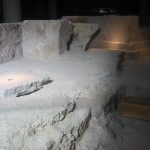For the World Music Day, next June 21, the Internet will be filled with music thanks to the online macro-concert that will be offered by about twenty creative cities -among them Llíria City Of Music-, organized by Kansas City, under the project ‘The journey of percussion’.
The videos will be streamed on YouTube courtesy of the Music Export Poland with the support of the Polish Ministry of Culture. The Voyage of the Drum is hosted by UCCN with Kansas City Missouri USA – the only UNESCO Creative City of Music in the United States. The Voyage of the Drum unites the cities of the world through the drum – one of humanity’s earliest instruments. The Voyage of the Drum celebrates the African Diaspora around the world and demonstrates how the influence of African rhythms is felt through many world music cultures. The 18 participating cities include (year the City joined UNESCO UCCN):
- Adelaide, Australia (2015)
- Ambon, Indonesia (2019)
- Bogotá, Colombia (2012)
- Chennai, India (2017)
- Daegu, South Korea (2017)
- Frutillar, Chiles (2017)
- Glasgow, Scotland (2008)
- Hamamatsu City, Japan (2014)
- Idanha-a-Nova, Portugal (2015)
- Kansas City, Missouri, USA (2017)
- Kazan, Russia (2019)
- Kingston, Jamaica (2015)
- Kirşehir, Turkey (2019)
- Leiria, Portugal (2019) with special guests from Guinea-Bissau
- Llíria, Spain (2019)
- Nassau, Bahamas (Crafts and Folk Art – 2014)
- Santo Domingo, Dominican Republic (2019)
- Veszprém, Hungary (2019)
Llíria will be represented by the percussion group Kontakte, which will perform its program ‘The Twelve Works of Hercules’. The show is structured in fourteen movements, from which twelve correspond to each of the labours commissioned by Eurystheus, besides a prelude, which narrates Hercules’ madness attack, which leads him to murder his children and his wife (Megara), and an End, which describes the death of the hero, poisoned by Deianira. As for the musical field, the main attraction of the show lies in the combination of modern melodic percussion instruments (marimba, vibraphone…) with ancient percussion instruments (square drums, anklungs, talking drums, tambourines…) and old wind and string instruments (Ocarina, Saz, Santur, double flute, Turkish oboe, Baglama…).
This show offers us a musical journey through the scenes in which the action of the hero Hercules takes place, from the Peloponnese peninsula to the Underworld, where the rhythms and melodies of each of the different regions stand out. Though it is not descriptive music of the heroes actions, it will surely transport us to those far-off worlds and we will be able to feel them very close.
Madness, death, the rhythms of the action and the beauty of the different regions are present in this very varied music. The texts, both of the recited and sung parts, are based on the work by the classics of Roman literature (Euripides, Hyginus, Virgil, Boethius, Ovid and Seneca).









